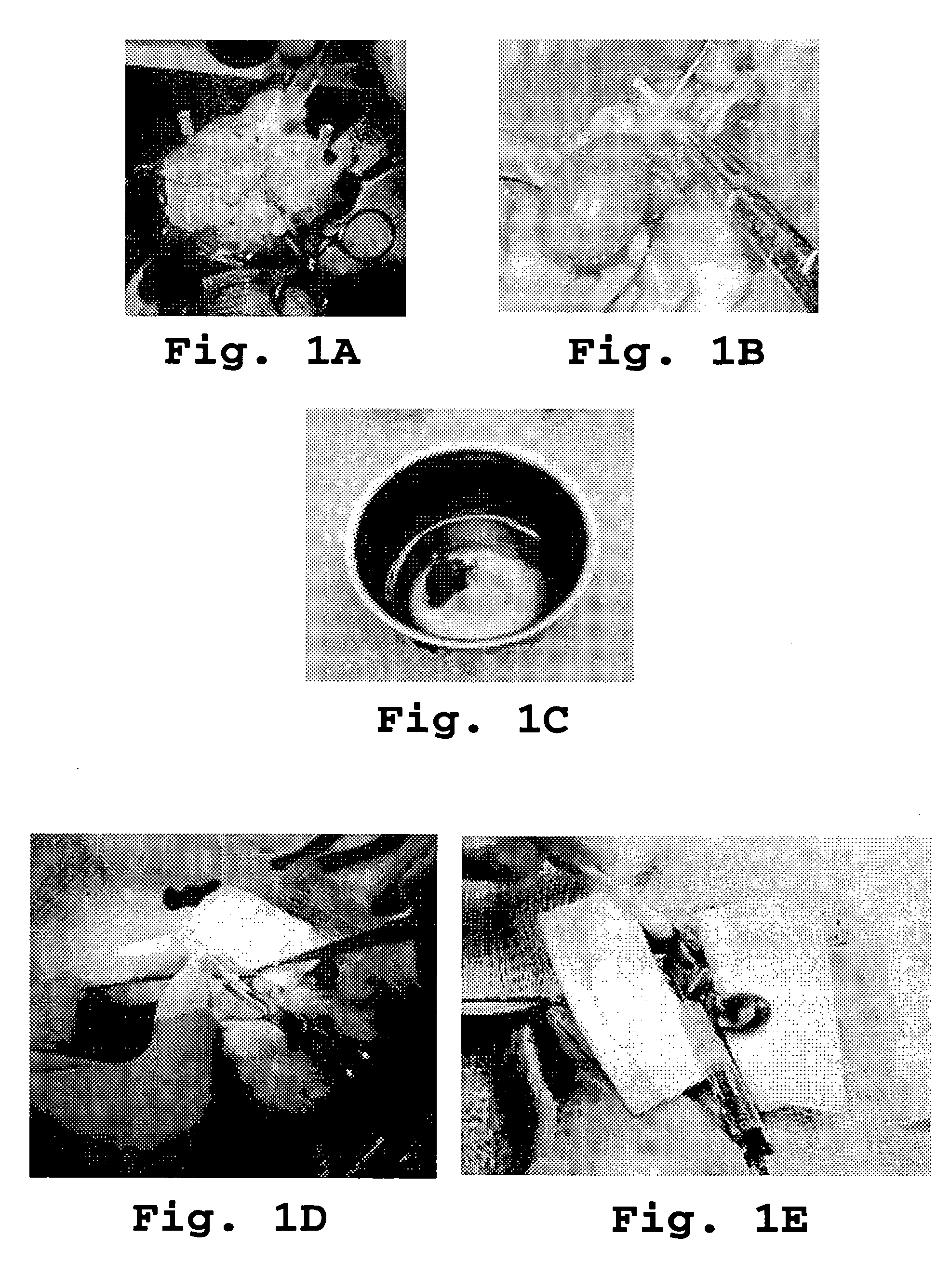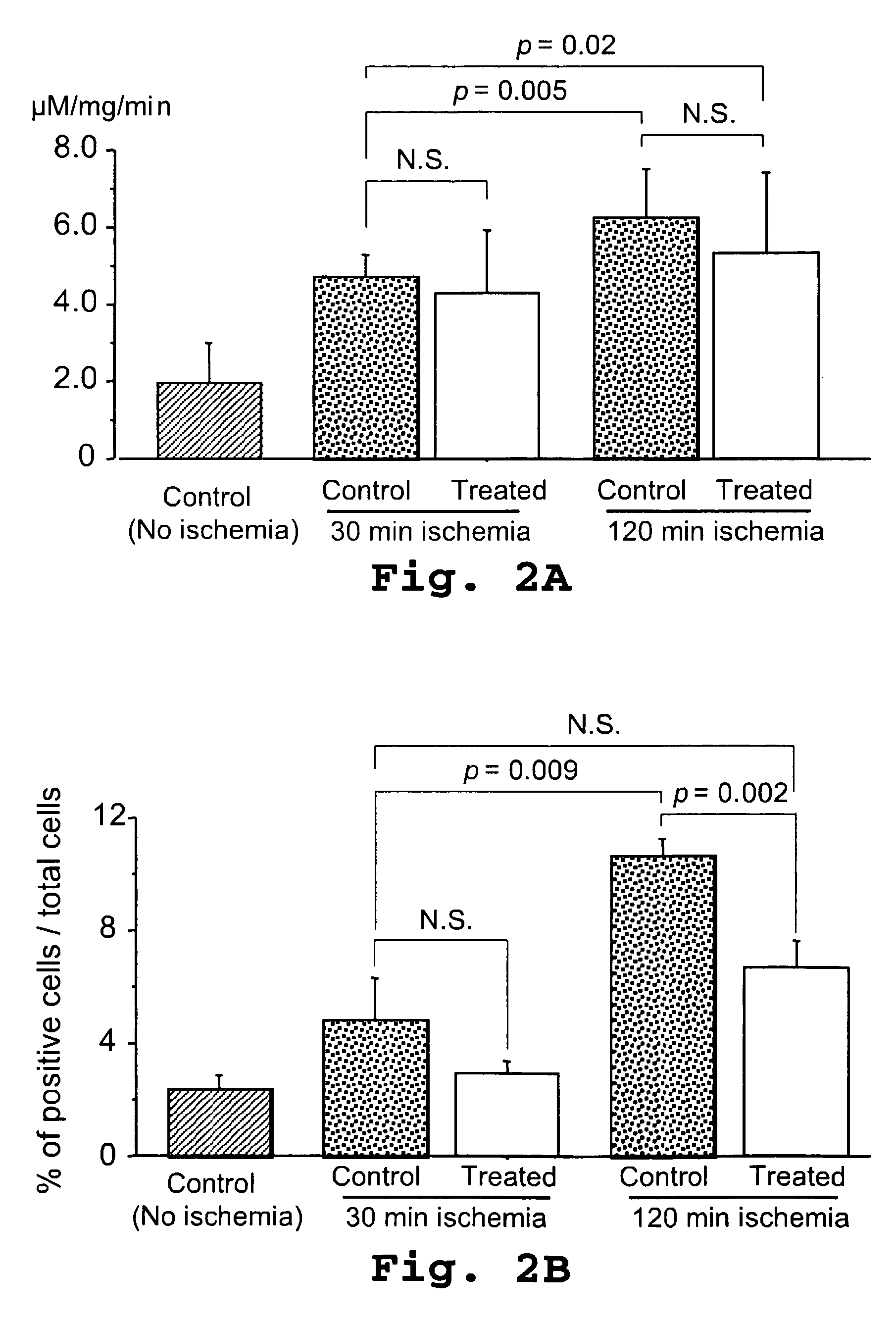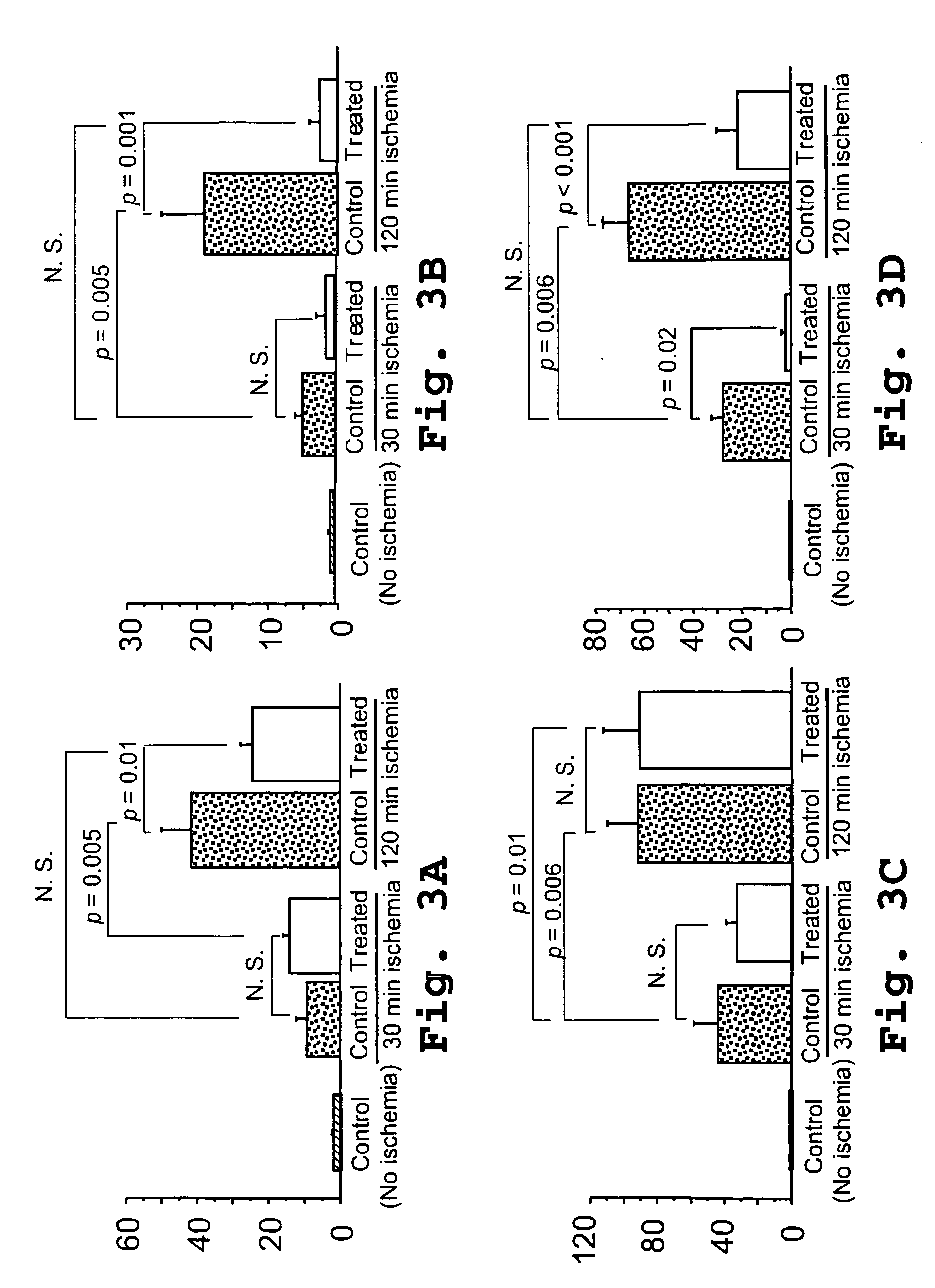Methods and compositions for reducing injury to a transplanted organ
a transplanted organ and injury technology, applied in the direction of anti-noxious agents, peptide sources, peptide/protein ingredients, etc., can solve the problem of no effective treatment other than re-transplantation, and achieve the effect of decreasing the inflammatory respons
- Summary
- Abstract
- Description
- Claims
- Application Information
AI Technical Summary
Benefits of technology
Problems solved by technology
Method used
Image
Examples
example 1
Effect of Treatment With PKC Regulators During Ischemia-Reperfusion Injury On Superoxide Production and Cardiomyocyte Apoptosis
[0121] This example shows that cardiomyocte apoptosis was decreased when a heart was transplanted from a donor rat to a recipient rat and the rats were treated as described in the materials and methods section. This example further shows that superoxide production was unaffected in the rats. FIG. 1 illustrates the procedure and indicates the route of delivery and identity of the PKC regulating peptide used. Due to the length of the procedure, the minimal ischemic time for the transplanted organ was 30 minutes. Therefore, these hearts were compared to hearts kept ischemic for a total of 120 minutes. Superoxide production was measured first because myocardial injury following ischemia-reperfusion is mediated by oxygen-derived free radicals such as superoxide anion [Hess, M. L., and Kukreja, R. C. Ann. Thorac. Surg. 60:760-766 (1995)]. Four hours after reperfu...
example 2
Effect of Treatment With PKC Regulators During Prolonged Ischemia On the Resultant Pro-Inflammatory Response of Ischemia-Reperfusion Injury
[0124] This example shows that treatment of heart donor rats and hear recipient rats with the PKC regulators described herein results in a decrease in the pro-inflammatory response mediated by certain chemokines and cytokines. Ischemia-reperfusion injury also produces a pro-inflammatory environment, which includes an influx of injurious cytokines and chemokines [Bergese, S. D. et al., Am. J. Pathol. 147:166-175 (1995)]. To determine whether treatment with the PKC regulators reduces the inflammatory response during prolonged ischemia, neutrophil-produced MPO was examined. Neutrophils are predominant effecter cells in the local inflammatory response [Zimmerli, W. et al., J. Clin Invest. 73:1191-1200 (1984)]. The levels of the pro-inflammatory cytokines and chemokines, TNF-α, IL-1β, and MCP-1 / CCL2 were also determined. Four hours after transplantat...
example 3
The Effect of Treatment With Selected PKC Regulators On Development of GCAD Stimulated By Prolonged Ischemia
[0125] This example shows that treatment of heart donor rats and heart recipient rats with selected PKC regulators inhibits the development of GCAD stimulated by prolonged ischemia. It was first demonstrated that prolonged ischemia during organ procurement increases GCAD, as measured 90 days after transplantation (FIG. 5). A 3.2-fold increase in the luminal narrowing percentage, a 4.5-fold increase in the intima-to-media ratio and a 2.5 fold increase in the diseased vessel percentage were evident. Conversely, treatment with the PKC regulators during organ procurement and right at reperfusion inhibited GCAD in the cardiac allografts subjected to a 120-minute of ischemia; decreased the percentage of luminal narrowing by 78%, decreased the intima-to-media ratio by 58% and decreased the percentage of diseased vessels by 68% 90 days after transplantation (FIG. 5).
Discussion Rela...
PUM
| Property | Measurement | Unit |
|---|---|---|
| temperature | aaaaa | aaaaa |
| time | aaaaa | aaaaa |
| time | aaaaa | aaaaa |
Abstract
Description
Claims
Application Information
 Login to View More
Login to View More - R&D
- Intellectual Property
- Life Sciences
- Materials
- Tech Scout
- Unparalleled Data Quality
- Higher Quality Content
- 60% Fewer Hallucinations
Browse by: Latest US Patents, China's latest patents, Technical Efficacy Thesaurus, Application Domain, Technology Topic, Popular Technical Reports.
© 2025 PatSnap. All rights reserved.Legal|Privacy policy|Modern Slavery Act Transparency Statement|Sitemap|About US| Contact US: help@patsnap.com



